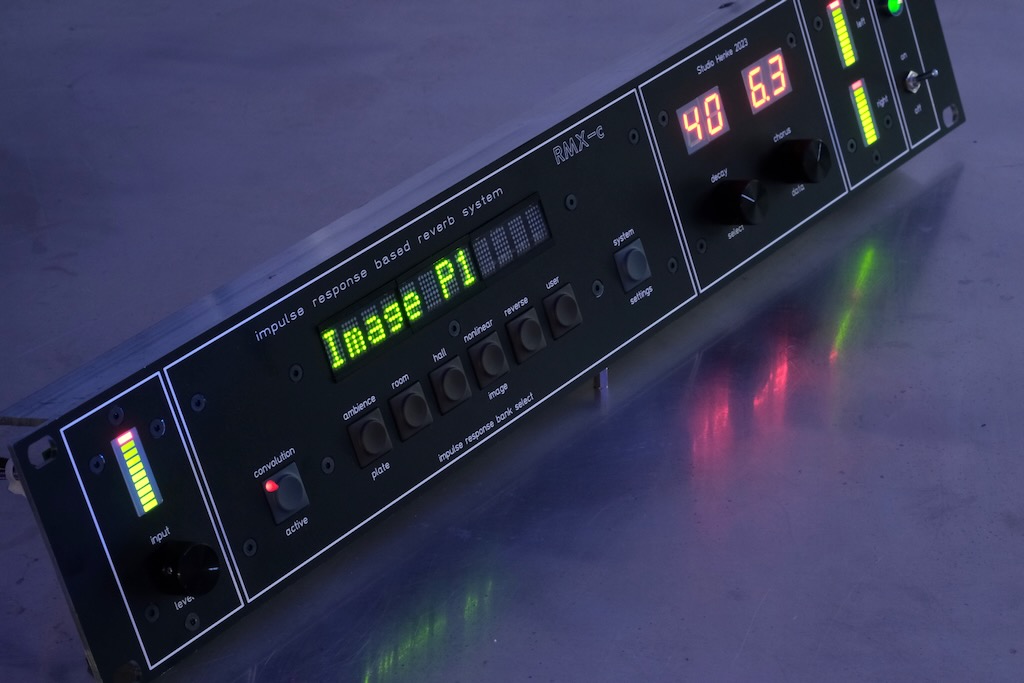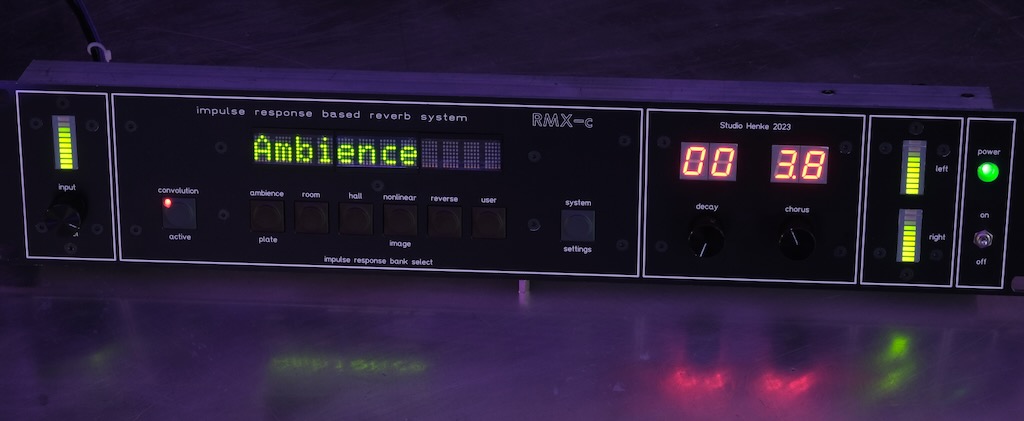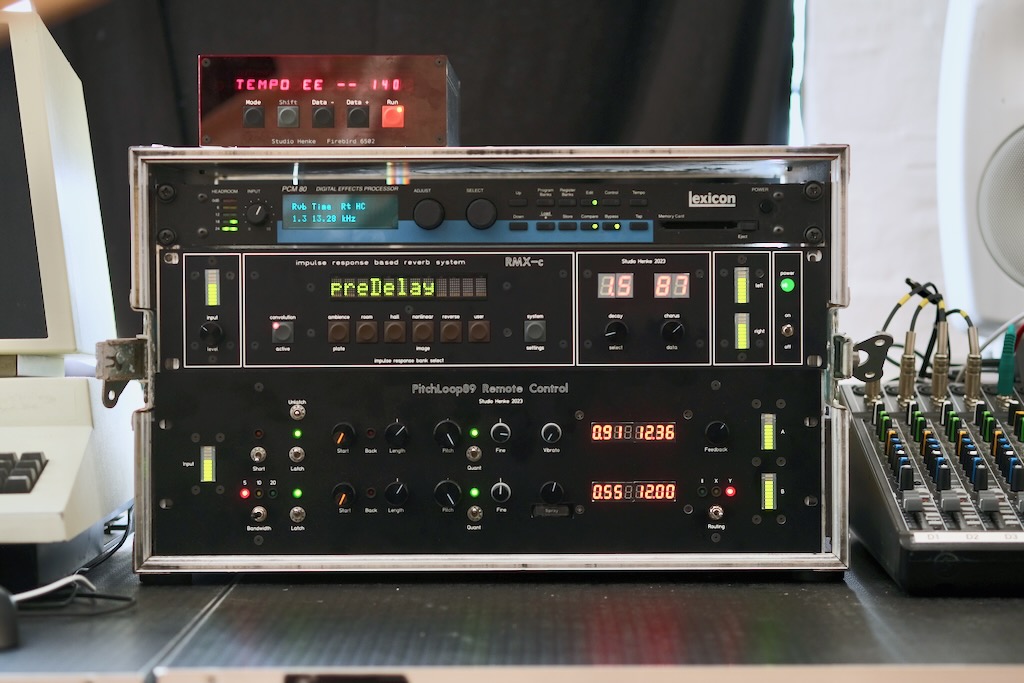RMX-c
Hardware front-end for a convolution engine [2023]

A vital role in the sound design of the CBM8032AV performances had a legendary british effects processor from the early 1980s, the AMS-RMX16. Unfortunately, the original hardware does not appreciate being carried around anymore. The RMX-c is a convolution based replacement, provining the same sonic characteristic.
The intention was not to create a 100% replica, but a system capable of delivering the sound desired for the performances, paired with a different interface and interaction paradigm that expands its possibilities.

Photo below shows the original 1981 effects unit, photo above the 2023 hardware.

General Operation and Features
The main use case for the RMX-c during the CBM8032AV performances is delivering either chorus or short / nonlinear / reverse reverb effects. The hardware interface gives fast access to reverb type, reverb decay and chorus amount.
Since the chorus cannot be replicated with the principle of convolution, it is a separate process, running after the convolution engine.
Unlike with the original hardware this makes it possible to add chorus to any of the reverb algorithms.
The decay time parameter crossfades between 16 impulse responses of the same reverb algorithm, captured with different decay settings. The dynamic behaviour when changing its value is not the same as when changing decay times in an algorithmic reverb. RMX-c has its own 'character'.
The selection of the different reverb algorithms happens via dedicated buttons, and not the 'previous' / 'next' buttons on the original hardware, which is a huge plus when performing. A special 'User' bank allows to play with a curated set of impulse resonses that do not need to represent different decay times, but instead allow to morph between very different reverb algorithms and settings - a reverb mashup machine.

Technical Background
The interface is controlled via a Teensy 3.2 microcontroller, and communicates via USB with a Max4Live device running on a Mac Mini. The Max4Live device contains a multiple convolution engine.
All AMS-RMX16 reverbs have been recorded with multiple settings for each algorithm, and a series of 16 impulse responses each have been selected, which can be chosen via the decay knob. It is planned to port the DSP side to a dedicated platform soon, and to run it all without the need to use an additional computer.
The hardware and the underlying DSP code allow to extend the functionality of the interface towards using completely different impulse responses in the future.
screenshot above: KiCad 7 design of main PCB, photo below: back side of effect unit.
RMX-c has been developed and built by Robert Henke in Summer 2023. Special thank you to Sebastian Wolf and Nikoloz Kapanadze. Picture below shows complete effects rack for the CBM 8032 AV shows, with the Firebird computer on top, a Lexicon PCM-80 reverb unit, the RMX-c and the PitchLoop89 remote.


